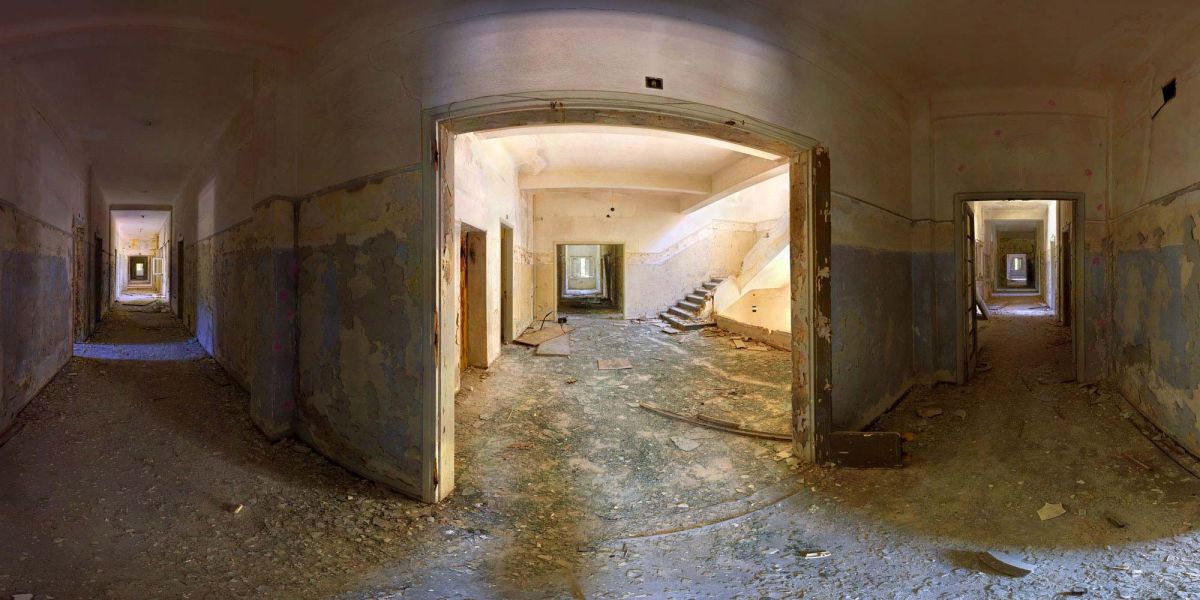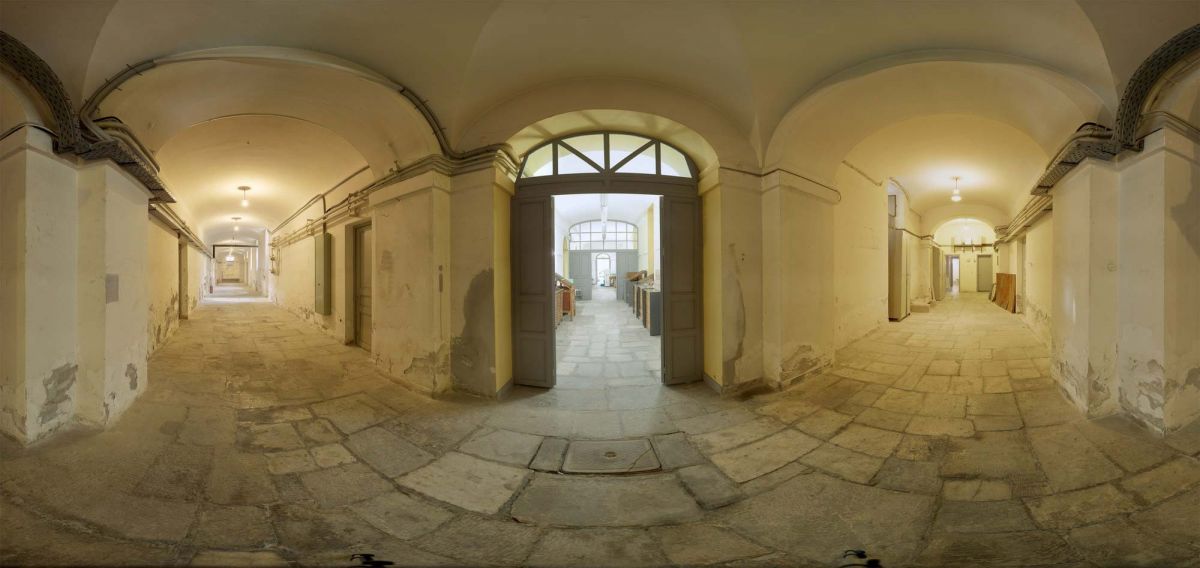MARIOS SPILIOPOULOS / Painter, professor at the A.S.F.A.
>The essential is no longer visible
Magdalena Jetelova
from her work “Atlantic Wall” 1995
Chris Simatos is a silent new artist, but not a timid one. He merely doesn’t talk much, he acts quietly instead, he sets up goals and achieves them in silence. At first, he seems reserved, hermetically sealed, absorbed in his esoteric quests. So, when I first met him, when he was a sophomore at the Athens School of Fine Arts (ASFA) back in 1998, he was persistently seeking to find a way of expressing himself in a peculiar pictorial way. Inner spaces with a broken perspective and one or two, at the most, abstractive figures “dwelling” inside these fragmented rooms like shadows, “phantoms” of the living, in loose postures, like burial shells made of thick, colorful layers of oil and blank canvas, encircling human “shadows” that have accepted the mundane and imperfect nature of existence. A hint to the platonic cave myth or a comment on the tragedy of perishableness? The question lingers on …
In 2000, Chris Simatos stays in Madrid for 6 months, thanks to the Erasmus programme, and returns with a series of black-and-white photographs of inner spaces, devoid of the human presence, with intense chiaroscuros and strict geometrical compositions of the shapes of the shades. Inhabited places with no humans present; shells, once again, with recorded traces of life. A transfer of the pictorial quest to a different means, namely to photography, a mechanical impression more objective and detached. In 2005, he enters the Postgraduate Programme in Fine Arts at the ASFA and in a silent, systematic way –particular to his character as aforementioned– studies in depth the techniques of digital imaging, to the degree of inventing his very own ones, which lead him to high resolution and high fidelity photographs and videos.
This personal technical accomplishment played a decisive role for his turn to the work where illusion constitutes the conceptual axis, commenting the very means of photographic imaging itself. A celebrated example is the “closed studio door”, in which, by placing the photograph that depicts the corridor behind it when it is open, creates the illusion to the viewer that the door does not exist at all. Thus, thanks to the resolution of his photographic means, he provides the viewer with the possibility to see behind the door, his glance transcends the boundaries of sight making the invisible visible, and sees what lies “behind” the optical obstacle, what lies beyond, and whatever this means today: the boundary –the door– for the passage to another space –world– empty, without meaning, or even our entrance to another “meta-physical” space, where the ideas each one of us has for the afterlife and in general his ontological questions are projected. The work I especially single out is the “closed studio door” as a landmark of his so far pictorial quest. It is a work with conceptual depth, versatile and open to personal readings and interpretations, that fits well enough in a simple, mundane form, and proves that the profound questions about our existence can be articulated in the plainest and humblest of ways, as far their form is concerned.
Next, using as his favorite theme the abandoned Xenia Hotel on Mount Parnes in Athens –at first a sanatorium, then a hotel and finally just ruins– he continues his explorations through the photographic “immortalization” of the damaged –due to the relentless passing of time and human indifference– spaces, via panoramic takes, which intensify dramatically the unfamiliar feeling of desolation, abandonment and destruction. Architectural building–shell, the Xenia Hotel, empty now, uninhabited, bears traces of his old life recorded on its walls and broken furniture, remains of human presence, of people we never met, an ark of memory. An unfamiliar monument, made of photographs (the objectivity of which is relentless). At this point I believe that the panoramic photographic takes of the deserted corridors, weathered by time, of the historical building of the ASFA of the National Techical University of Athens (NTUA), which Chris Simatos proposes to be held in contrast to the previous one (the Xenia Hotel), namely a “familiar” place, experienced by himself and his colleagues as the place of training in the art he practices, does not soothe the feeling of “unfamiliarity” and isolation caused by the Xenia Hotel. He just places himself symbolically inside his work, as a prey–predator of this tug-of-war of the familiar–unfamiliar. Consequently, here we can say that every architectural building–shell, every ruin is an “ark of memory”, it encompasses the traces of life of those who once lived in it, their history. In general, the photographic impression of ruined buildings is a kind of impression of the history of people who dwelt in them in the past, and are projected, together with the traces they left behind, to the present and future.
Finally, with the “photographic installation” (400cm by 190cm), by breaking the panoramic photograph of the corridors of the Xenia Hotel into 120 pieces (20cm by 30cm each), he builds anew his image, disorganizing its conceptual coherence: a fragmentation that undermines clarity, projecting the destruction–reconstruction bipole as one more accurate comment on the possibilities of the means, namely the photograph.
Concluding, I believe Chris Simatos, with his first personal exhibition, makes a very promising, impressive and distinct entrance into our artistic world, having well-defined goals which he easily realizes thanks to his wide range of personal traits and abilities. So, Chris, I wish you all the best in the nice voyage you are embarking on, and I can’t wait to see what your next stop will bring us.


